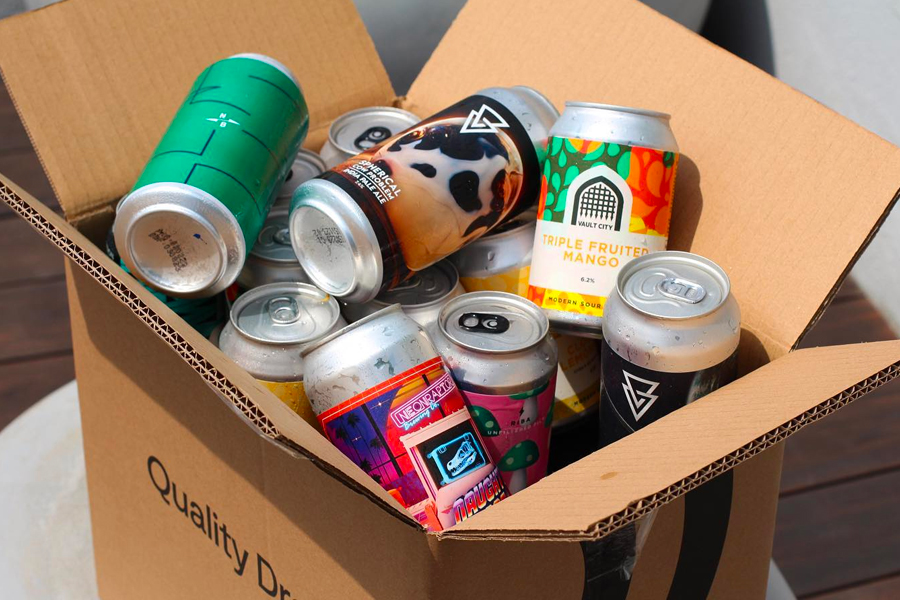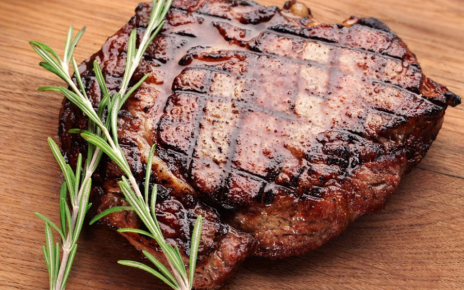Craft beer has brought about a major change in the beer industry, offering a wide array of flavors and styles meeting the varied tastes of beer connoisseurs. While beer has been a popular beverage for centuries, the craft beer industry has introduced an innovation. In this blog, let’s explore two popular and contrasting styles: the stouts and the IPAs. From sweet, full-bodied stouts to bold and hoppy IPAs, these beer styles represent the diversity of flavors and experiences that craft breweries can offer.
Stouts: The Dark and Delicious
Stouts are a dark beer style known for their rich, robust flavors and often thick, creamy textures. These beers originated in the United Kingdom and have a long history, dating back to the 18th century. They have since evolved into a diverse range of substyles, each with its unique characteristics.
Irish Stout
Irish stouts are a popular name in the beer industry, defined by two distinct styles: the American light lagers and the Guinness. Guinness is a dry stout renowned for its luxurious, creamy texture and frothy head. Its distinctive flavors are primarily from the roasted barley incorporated into its recipe.
American Stout
American stouts highlight the rich flavors of dark malts with robust notes of coffee and chocolate. This kind of stout tends to have a higher alcohol content, giving them a bold and robust profile that sets them apart from their Irish counterparts.
Milk Stout
Milk Stout’s distinction is the inclusion of lactose sugar, giving it a subtle sweetness that balances the inherent bitterness of the dark malts. The unique aspect of lactose is that brewing yeasts cannot ferment it, giving it a pleasing, lingering sweetness that enriches the overall drinking experience.
Oatmeal Stout
Oatmeal stouts owe their distinctive name to a simple yet ingenious addition to the traditional stout recipe: oats. These oats work their magic by imparting a delightful creaminess and a touch of opulent richness to the finished beer, effectively mellowing any hint of bitterness arising from the roasted grains.
Coffee Stout
Coffee stouts are a delightful marriage of the robust flavors of stouts with the rich, aromatic qualities of coffee. Some breweries opt for the bold approach, introducing liquid coffee or aging their stouts with coffee beans to create an espresso-like jolt of coffee flavor, ensuring that coffee stout lovers are in for a treat.
Pastry Stout
The flavor profiles of pastry stouts can be extraordinary, pushing the boundaries of traditional stout flavors. Sugary notes like marshmallows, licorice, graham crackers, and peanut butter are some of the ingredients used for this kind of stout. The pastry stout is a taste adventure that’s not for the faint of heart but can be a delight for those seeking a unique and decadent beer experience.
Russian Imperial Stout
Russian Imperial Stout, distinct from its regular stout counterpart, is a robust and potent brew, often boasting an alcohol content exceeding 10{ae679b9eff24afe3e4666fd38ff374bd801f1bce73943e00fc56a246146f39e9}. Featuring a heartier hop presence, lending it a pleasantly bitter edge.
Bourbon Barrel-Aged Stout
As the name suggests, this stout undergoes aging in barrels formerly employed for bourbon, with occasional experiments involving other types of barrels, such as rum. This process bestows upon the final beer a rich tapestry of flavors, encompassing the subtle aroma of oak and the lingering essence of the spirits that once dwelled within the barrels.
The diversity of stouts is truly astounding, and craft brewers continue to experiment and create unique variations of this classic style. From the deep, complex flavors of imperial stouts to the smooth and velvety oatmeal stouts, stouts cater to those seeking a dark, rich, and full-bodied beer experience.
IPAs: A World of Hoppy Adventure
English IPA
The English IPA is known for its unique and earthy character. With a notably dry, hoppy finish and an ABV ranging between 6{ae679b9eff24afe3e4666fd38ff374bd801f1bce73943e00fc56a246146f39e9} and 7{ae679b9eff24afe3e4666fd38ff374bd801f1bce73943e00fc56a246146f39e9}, English IPAs are a testament to tradition. Notably, pale alt malt is the characteristic ingredient in English IPAs, setting them apart from their American counterparts and highlighting their malt-centric distinction.
West Coast IPA
West Coast IPAs are known for their crystal-clear appearance, boasting an inviting orangey golden hue. Originating in California, this style features American “C” hops like Cascade, Citra, and Chinook, contributing to its signature piney aroma and earthy citrus notes. While they tend to be less dry, West Coast IPAs stand out for their pronounced bitterness, maintaining their place in the ever-evolving world of craft beer.
Double IPA
Double IPAs, also known as Imperial IPAs, have carved out their niche in the craft beer industry. These robust brews, often exceeding 7.5-8 percent ABV, are amped-up versions of American IPAs or New England IPAs. Brewers achieve this by infusing the beer with a rich tapestry of hop notes, from floral and piney to bright citrus flavors. With a minimum ABV of 7.5{ae679b9eff24afe3e4666fd38ff374bd801f1bce73943e00fc56a246146f39e9}, these strong sippers offer a well-balanced blend of malt sweetness and hoppy bitterness, creating a delightful and potent beer that has gained a fervent following among beer enthusiasts.
American IPA
The American IPA is known for its medium-gold to light amber hue and a generous crown of white to off-white foam. Its character is marked by a hop-forward approach, a clean fermentation profile, a dry finish, and a supporting malt hint that allows a diverse range of hop flavors to shine. It’s worth noting that without the American IPA, the foundation for all the other IPA styles mentioned here would not exist.
Belgian IPA
The Belgian IPA is a unique and enticing beer style renowned for its distinctive characteristics. This IPA variety boasts a delightful blend of fruity and spicy aromas and flavors. It’s no stranger to the enticing scent of grassy hops and the comforting notes of caramel and grainy malt.
Black/ Brown IPA
When it comes to Black IPAs, they boast a dark brown or fully black color and maintain a delicate, supportive malt flavor that doesn’t overpower the IPA characteristics. Expect a dry and fruity taste, but don’t be surprised if you detect hints of dark malt flavors like caramel, toffee, chocolate, or coffee, blending harmoniously with the hoppy goodness.
Brown IPAs, on the other hand, offer a twist on the traditional American Brown Ale, with a higher bitterness level and a notable IPA hop-forward profile. They balance this with a robust dark fruit malt character, creating a delightful fusion of flavors that’s sure to pique the palate of adventurous beer enthusiasts.
India Pale Ales, commonly known as IPAs, have taken the craft beer world by storm with their hop-forward flavors and aromatic profiles. The story of IPAs dates back to the 18th century when British brewers created these beers to withstand long voyages to India. Modern craft brewers have redefined the style, leading to an incredible range of options.
Conclusion
Craft beer has redefined what beer can be, offering an astonishing array of flavors and styles. Stouts and IPAs represent two distinct poles of this diversity. Stouts are known for their rich, dark, and often creamy profiles, while IPAs are known for their hop-forward, aromatic, and hazy nature. Both styles showcase the creativity and passion of craft brewers.
Whether you’re sipping a velvety oatmeal stout or enjoying the refreshing burst of hops in a New England IPA, craft beer invites you to embark on a delicious journey. So, the next time you’re at your local brewery or beer store like Quality Drops Beer, don’t hesitate to explore the world of craft beer – you might just discover your new favorite brew.




